East Asian Art section at the Museum für Kunst und Gewerbe, Hamburg
- Micaela
- Sep 6, 2017
- 4 min read
Having left the Islamic Art section I headed upstairs into the East Asian Art department. What I noticed, if I compare it to other museums I've visited, is how empty the exhibition spaces are. Not only were there very, very visitors but the artwork on display is spaced generously and has lots of space to breath. It is a really relaxing way to view and enjoy them. For me it was lovely to so much ceramic work on display, which I homed in on and focussed on.
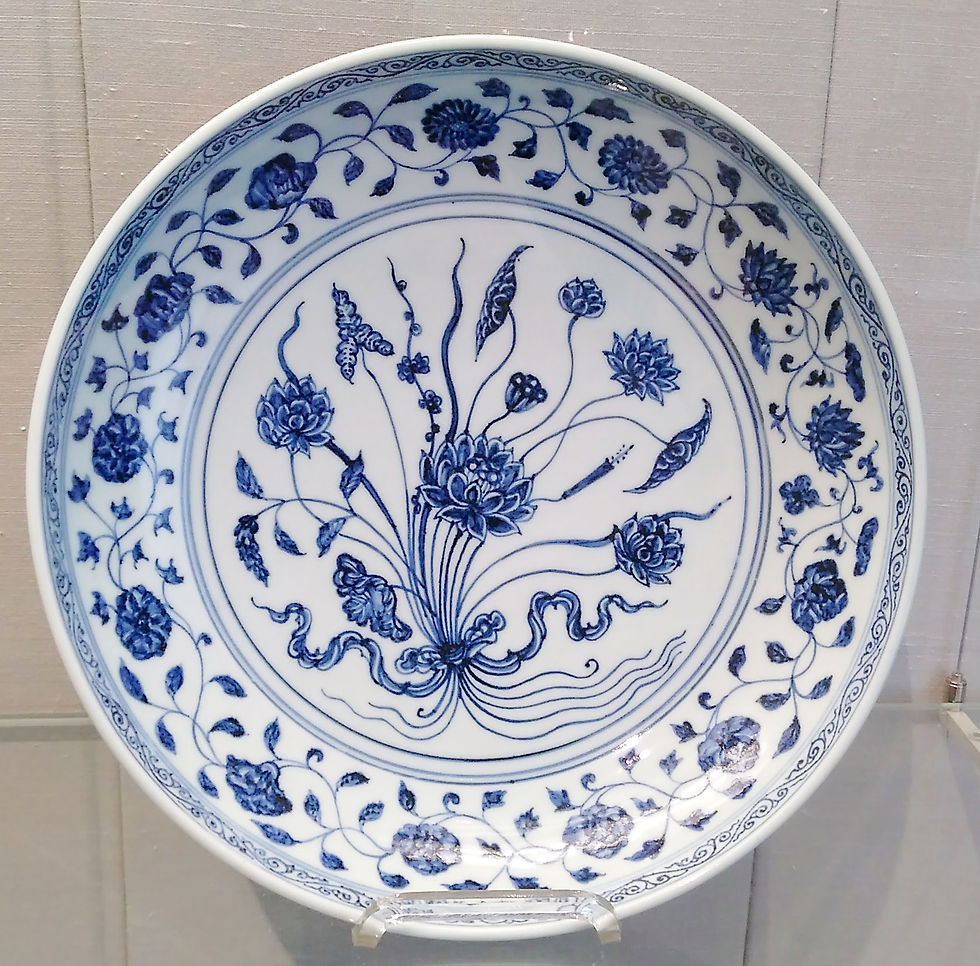
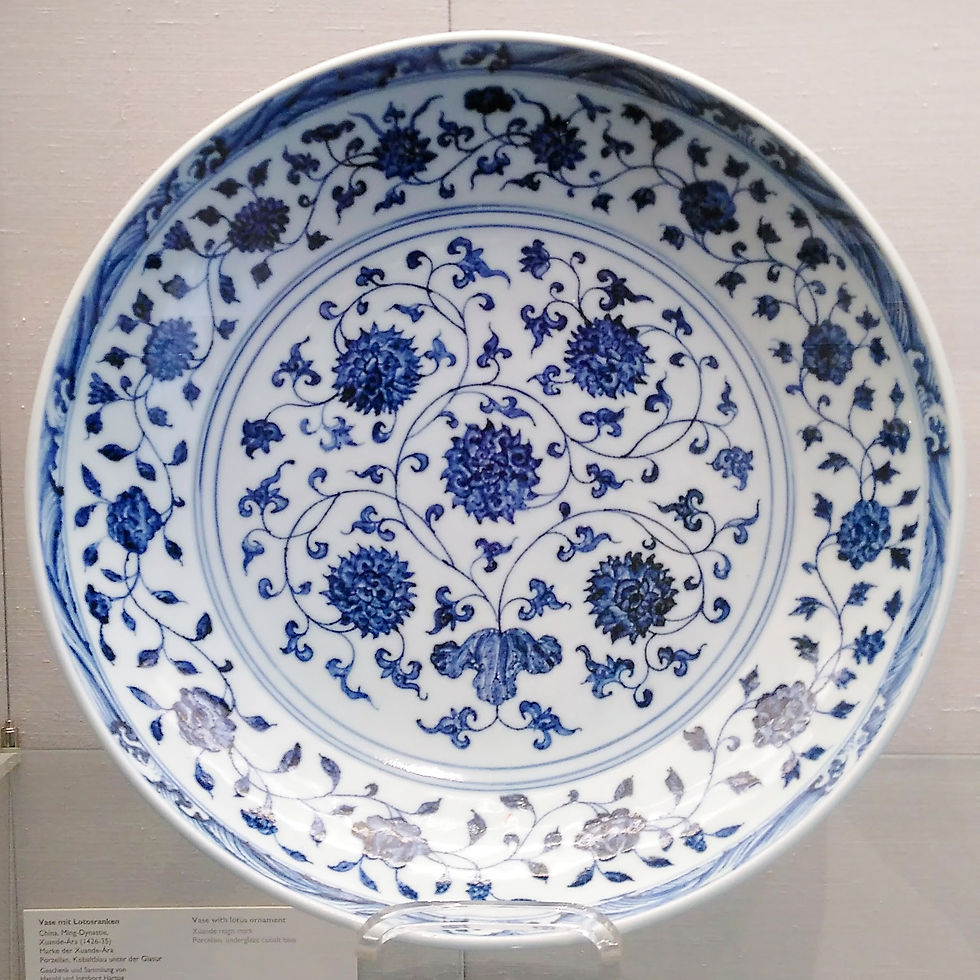
The first two pieces I cam across were these two Chinese porcelain plates from the Ming dynasty, c. 1403-1435. These really look so clean and perfect that it is hard to believe that they are six hundred years old. At the time they were produced and most people either ate from wooden bowls or rough earthenware good these must have been immensely precious and sophisticated. Blue and white porcelain is such a classic combination that I think it will never loose its appeal and these plates a pretty timeless.


These two plates look much more modern than they actually are. They could be examples from the 19th century European arts-and-crafts movement. However, they are also Chinese porcelain from the Qing dynasty, c. 1662-1722. The level of abstraction and the balance between the densely decorated centres to the bare rims is a sign of artistic confidence and refinement.
Predating these examples are these Chinese examples of three-colour ceramic ware (sancai) of the Tang dynasty, 618-906. Even though lead glazed wares were known as early as the 3rd c. B.C. they had their hight point in the with production of sancai pottery. The toxicity of these lead glazes limited their use to funerary occasions.




Up until fairly recently I would not have paid these sorts of ceramics much attention as the colours used are not really to my liking. However, I am now starting to like them and how their runny quality enhances the shapes of the pots. So much so, that I am thinking of potentially incorporating Tang glazes into my work.
I have already started developing my own version of Chinese celadon inspired pottery. While researching celadon glazes there has always been to reference to the aspiration to make their porcelain to look as much as the precious and highly regarded jade ware. So, I was particularly pleased to actually see a plate made from jade even if it is not an early example but dating from the Qing dynasty, 18th c.
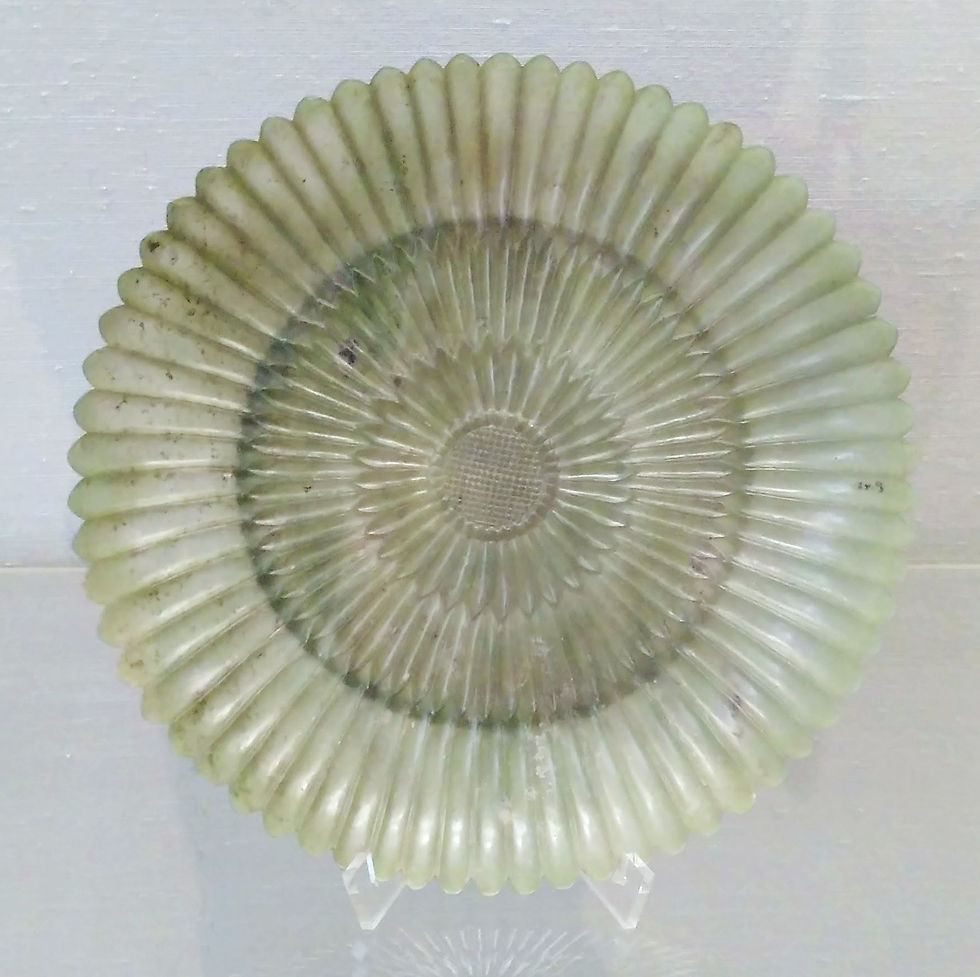
Here are some of the Chinese celadon glazed pots displayed at this museum:
The delicacy of the surface decorations and the slight colour variations are a result of different glaze thickness. Interesting are different style of surface treatments used from incising and sgraffito to press moulding. The tall vase on the middle row right looks so incredibly modern as if it could have been produced mid 20th c. Europe.
Celadonglazes were copied by a few neighbouring countries of China of which Korean celadonware may be the less well known. These two are two good examples showing how Korea has moved on to develop their own distinctive celadonware.

Left: This stoneware ewer in the shape of a gourd with lotus bud is from Korea from the Goryeo dynasty, 1st half of the 13th c. The addition of copper-red painting with a celadon glaze is very rare.
The cosmetic box is an example of Korean Sangam celadonware - a rarity in Chinese pottery - by which incised patterns are filled in with black and white slip prior below a celadon glaze.

No pottery collection covering East Asia would be complete with at least a few examples from Japan. Below are my top ceramic items on display all relating the art of the Japanese tea ceremony. Tea ceremony was an important way of living and expressing Zen Buddhism, which is still practiced to this day and age.
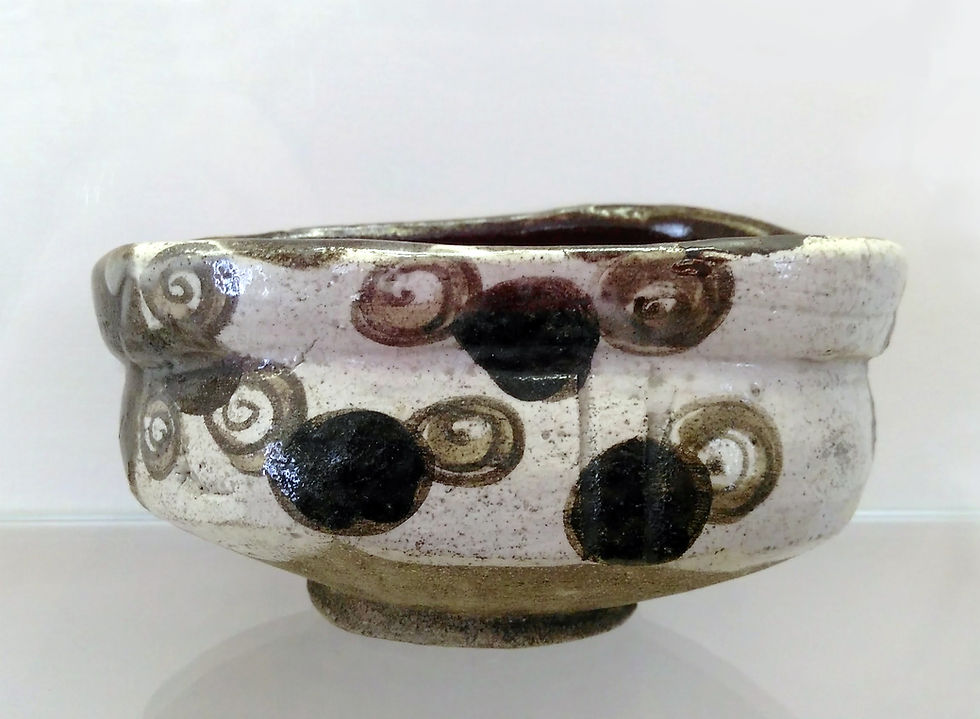
This stoneware tea bowl is a fairly simple and typical example of Japanese black Oribeware (Kuro-Oribe) from the early 17th century. It is named after a famous master of the Japanese tea ceremony, Furata Oribe (1544-1615) who particularly valued this type of ceramics.
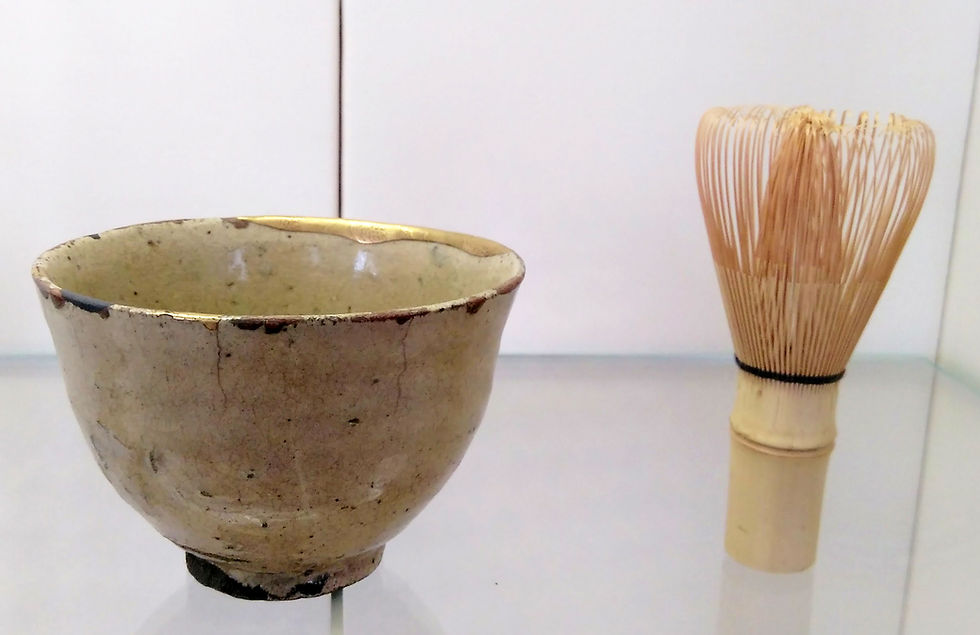
This tea bowl from the Momoyama period c. 1600 shows the Japanese art of Kintsugi where broken ceramics get beautifully repaired through the addition of gold or silver covered resin. Thus the damage of pottery becomes part of its valued history.
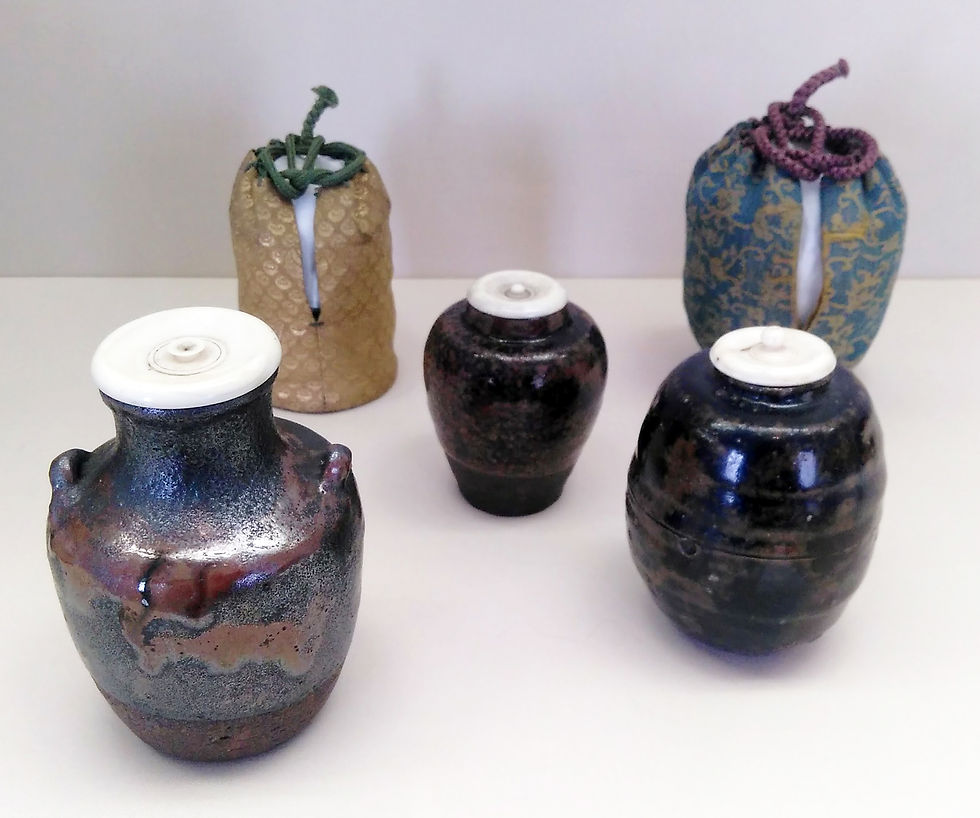
These three jars are containers for green tea and come with ivory lids and patterned bags. They date from the Seto period during 16th-17th century.

This stackable food container is another example of Oribeware from the Edo period c. 1800.
There is a real appreciation of the beauty of everyday items in cultures in East Asia. So much so that this museum had a whole exhibition dedicated to it: The Message of Things - The Role of Decorative Art in East Asia. Among the various exhibits the Japanese woodcuts were the most stunning. They were mostly still lives depicting every day objects such as bowls and cups. Unfortunately, the lighting was so low that my little camera struggled to take descent photos. However, here are just a few to give an example of how pottery and lacquer ware crossed over into print:


Left: Still-life of kettle with pine tree decoration by Suigaku (active 1850-1860) Edo period, 1852. This print was given out to celebrate a new year - the year of the rat as indicated by the rat handle.
Right: Still-life of sake pot, lacquer bowl and pine-bonsai by Shins (active 1764-1820) Edo period, 1820. Another new years piece with humorous poem.


Left: Still-life of bowl, scissors and grater by Ittei (active 1820-1830) Edo period, 1821.
Right: Still-life of eating utensils by Hokkei (1780-1850) Edo period, pre 1823.

Still-life of twelve sake bowls and sake bottles by Chosui Yabu (1814-1867) Edo period, 1859. A poem celebrating spring is written on each vessel. What I like about this one is the level of abstraction - the vessels are just shown in outline.
Even though my selection of images may seem numerous the actual display in the museum is, as said earlier, very generously spaced. In way, this reflects the importance that is given to each of the items on display. Less is more, as they say. It also resonates with the appreciation given to every day objects in places as Japan. The whole visiting experience of this section was all rather Zen!












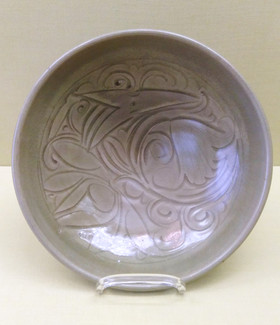


































Comments